
Gary Klein, a guru of efficient hot water delivery, has been pushing for change in hot water distribution systems for a long time. In recent years, he and his colleagues have developed a great tool for quantifying the efficiency of a hot water distribution system. It’s called the hot water system rectangle, and the concept is simple.
The hot water rectangle
To find the hot water rectangle, you draw the smallest rectangle possible that includes the water heater and all the hot water fixtures in a house. Then you find the area of that rectangle, divide it by the conditioned floor area, and express it as a percentage. If the hot water rectangle is as big as the conditioned floor area in a one-story house, the ratio would be 100%.
The schematic below shows the conditioned space of a one-story house outlined in black. I’ve also shown the locations of the water heater and all of the hot water fixtures in the diagram. In this simple example, the hot water rectangle is 93%. That’s only slightly less than the conditioned floor area. And believe it or not, as bad as that sounds, it’s not as bad as it could be.
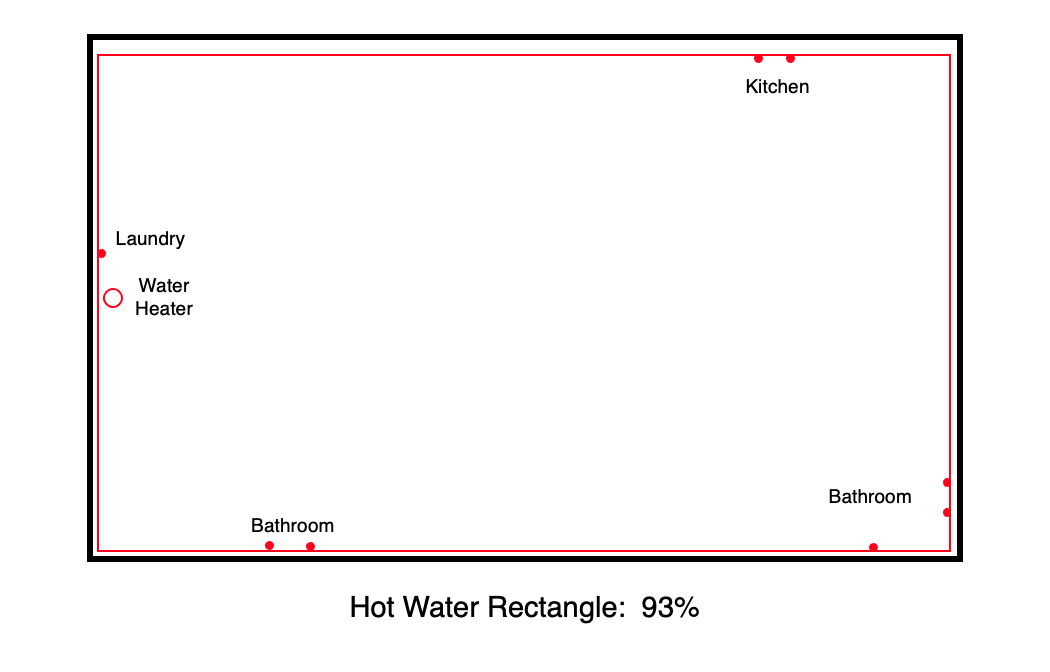
In a one-story house, the number actually can be more than 100%. If the water heater in the house above were in an attached garage, for example, the hot water rectangle would be greater than 100%. The conditioned floor area would be smaller because we’d subtract the area of the garage. But the hot water rectangle would be the same size shown above, making the ratio greater than 100%.
Multi-story houses and the hot water rectangle
When you have a two-story house, you still draw a single hot water rectangle. It has to include the water heater and all the hot water fixtures for both floors. The hypothetical maximum would be 50%, but that’s only if the rectangle doesn’t cross the building enclosure. For a three-story house, the hypothetical maximum would be 33%.
Even though we know the actual hot water rectangle can be larger than those numbers, they’re useful guides as to how efficient a house is. You want the hot water rectangle to be as small as possible and the percentage as low as possible. If you’re close to 100% for a single-story house, 50% for a two-story house, or 33% for a three-story house, that’s not good. If you’ve over those numbers, it’s even worse.
Using the hot water rectangle
The challenge is to reduce that ratio represented by the hot water rectangle. If you’re a home builder or architect looking to improve, this is easy to do. It’s a lot cheaper to move rooms around on a computer screen than it is in a real building. Let’s go back to that one-story house above. The hot water rectangle ratio is often a high number when no one considers the efficiency of the hot water distribution system. And in this house, the ratio starts out at 93%, which is pretty bad.
Without changing the floor plan much, we can reduce that number a lot. The second layout (just below) shows the kitchen rearranged to have the hot water fixtures near the center of the house and the two bathrooms also moved toward the center. The ratio for that configuration is 26%. Most of the rooms are pretty much in the same places, but we moved the kitchen plumbing to the interior and moved the bathrooms a bit.
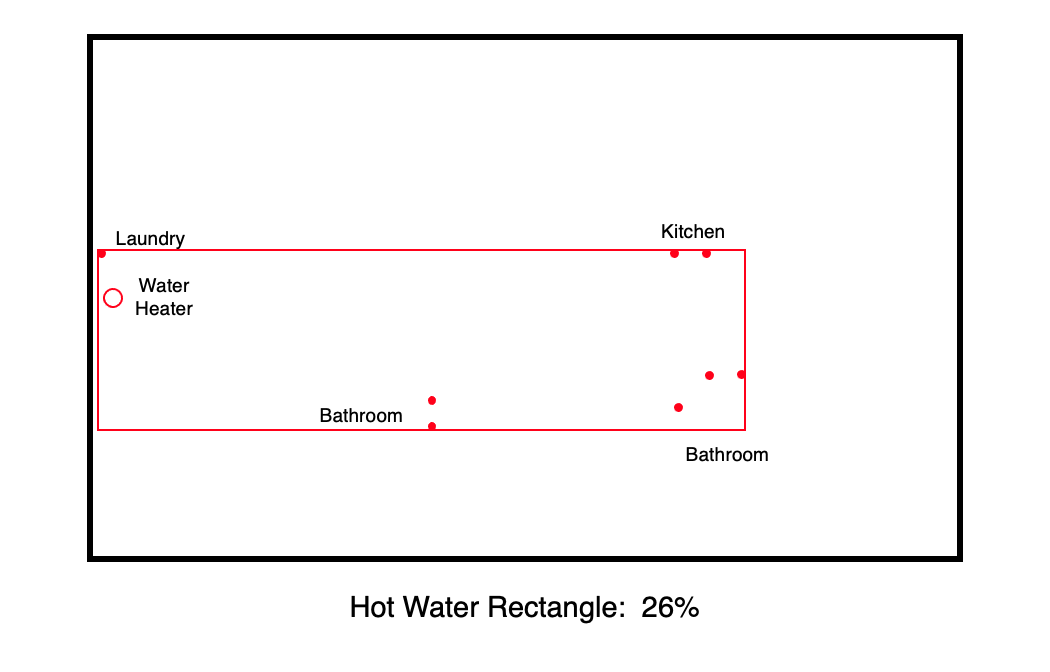
By making bigger changes to the floor plan, we can get an even bigger reduction in the hot water rectangle. In the third layout (below), the bathroom and kitchen hot water fixtures are even closer together. And the water heater and laundry room have moved to the center of the house. The result is a ratio of 3%. And that’s still not the best we can do.
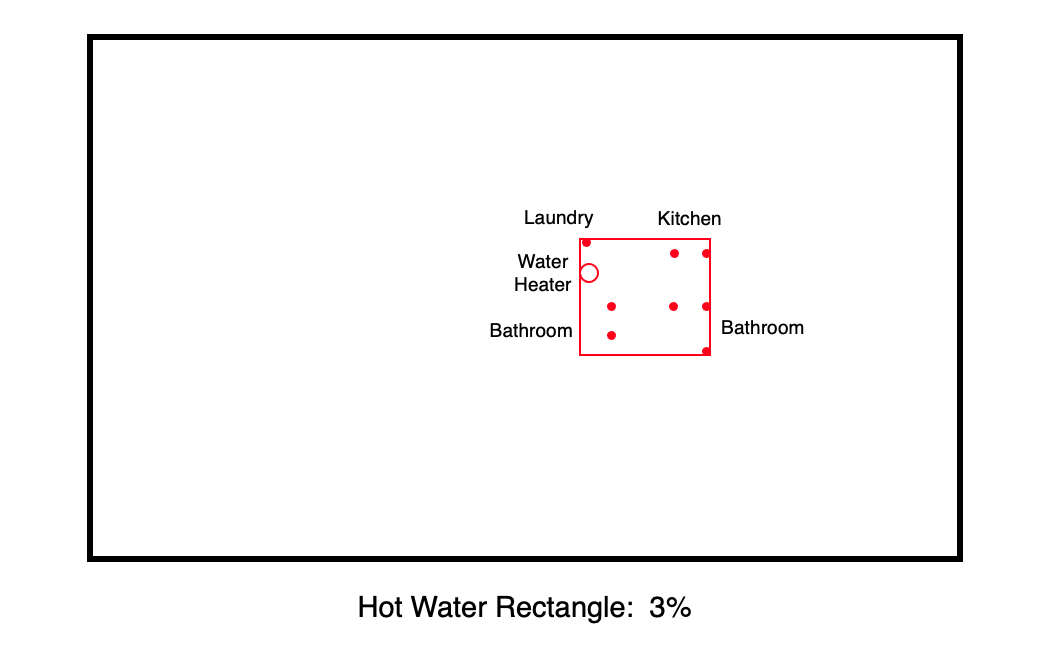
A real-world example of extreme improvement
Klein worked with Habitat for Humanity builder George Koertzen in Stockton, Calif., and helped him make a dramatic improvement in efficient hot water delivery by reducing the hot water rectangle ratio for the single-story houses he built. Before learning of the importance of clustering the wet rooms, Koertzen was building a floor plan with a 79% ratio. Then he saw the potential and got that down to 15% on his first attempt. Then 4% . . . then 2.5% . . . and finally, an astounding 0.8%!
The way he got down to less than 1% was by first putting the two bathrooms on opposite sides of the same wall. Then he put the kitchen sink and dishwasher at one end and the washing machine at the other end of that wall. He installed the tankless gas water heater over the toilet in one bathroom and the home run manifold over the toilet in the other bathroom. The total length of pipe from the water heater to the farthest fixture is less than 10 ft.
What can you do?
If you’re a remodeler or homeowner trying to figure out how to get efficient hot water delivery in an existing home, you face more challenges. One option is to replace the hot water pipes (assuming they’re accessible). Without changing the floor plan, you may be able to reduce the length and also right-size the diameters.
Another option is to move the water heater to a more central location, if that’s possible. Then reroute and right-size the piping at the same time. Or you could replace one large water heater with two or more smaller ones, closer to the hot water fixtures.
And the massively expensive option, of course, would be to gut the house and completely redesign the floor plan, clustering all the wet rooms in the same part of the house. My hot water rectangle ratio is currently 50% for a two-story house. By switching the laundry room with the foyer and moving the kitchen to the den, I could get that down to 5% or less. But that would be an enormous renovation.
In each of those options, your goal is to reduce the size of the hot water rectangle and right-size the pipes. However, in most existing homes the least expensive option is to install a demand-activated circulation pump under a sink that is at the end of one or more of the trunk lines in the house.
A report full of great info
The hot water rectangle (also called the hot water distribution rectangle or hot water system rectangle) is explained in detail in a 2021 report from the California Energy Commission (CEC-500-2021-043). It’s similar to the wet room rectangle, which may or may not be the same numerical area or ratio.
The authors of the report (Gary Klein, Jim Lutz, Yanda Zhang, and John Koeller) have done us all a great service by doing the research and putting the information out there. And it has a lot more on efficient hot water delivery than just the hot water rectangle. Chapter 5 even presents “two unexpected findings.”
Download the report: Code Changes and Implications of Residential Low Flow Hot Water Fixtures (CEC-500-2021-043)
_________________________________________________________________________
Allison A. Bailes III, PhD is a speaker, writer, building science consultant, and the founder of Energy Vanguard in Decatur, Georgia. He has a doctorate in physics and writes the Energy Vanguard Blog. He also has a book on building science coming out in the fall of 2022. You can follow him on Twitter at @EnergyVanguard.
Weekly Newsletter
Get building science and energy efficiency advice, plus special offers, in your inbox.






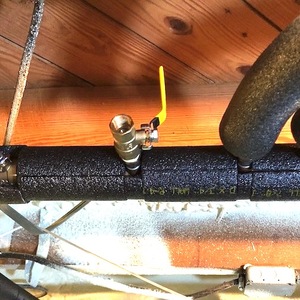
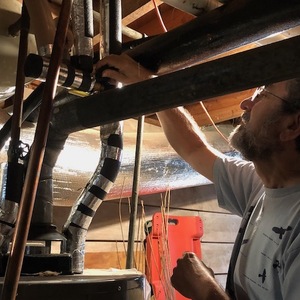
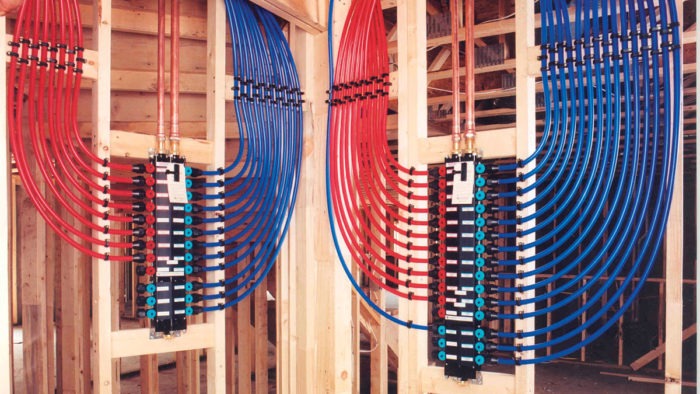






15 Comments
This is a really nice, straightforward, design heuristic.
Beyond the hot water distribution, a side benefit to gathering your wet rooms together is that you end up with a simpler design for your ERV/HRV ducting runs. Ideally, with your mechanical room close to (within? above?) the rectangle, your returns have a short, direct path (from the kitchen, bathrooms, and laundry) to leaving the envelope, and your supply lines can have a nice layout fanning out from the unit to the bedrooms / other living areas.
It is a useful tool, but I think it's also important to keep a sense of proportion. Living in a house with a floor plan which was driven by the efficiency of its hot water distribution system or duct runs, at the expense of other architectural or practical concerns, doesn't make much sense.
Oh, come on, Malcolm. Just as you don't have to give up architectural or practical concerns to have a good building enclosure, you don't have to give those things up to have a house designed for efficient hot water (or ducting). A good architect or designer can make it work.
Allison,
I agree. Good design incorporates as much as it can. I'm just cautious when efficiency concerns become the drivers of layouts. Making sure washrooms were back to back to minimize supply and drain lines would be the last thing I would think about when laying out floor plans. The gains are simply too inconsequential compared to other concerns.
We saw the result of that kind of thinking in the early solar houses of the 1970s, which were basically machines for gathering energy which people were somehow supposed to figure out how to live in. That approach probably set back the wider public's interest in energy efficiency by a decade.
You can see the flip side of this in a current discussion in the Q&A about how to build a house which is almost entirely glass on one face, and incorporates a number of difficult roof transitions, where the designer seems to have given little thought to practical concerns. In that situation where the drivers appear to have been entirely aesthetic, we wouldn't expect a building scientist to somehow just make it work.
I don't think the comparison to early solar houses of the 1970s is accurate. It was conventional wisdom to put washrooms back to back throughout the middle of the 20th century. I don't see complaint about nobody wanting those misguided unlivable houses.
Charlie,
I think you have conflated my two examples.
The problem with the early solar houses were that the living spaces were designed to harvest energy, not be comfortable for their occupants. One located near me in busy Vancouver was entirely glazed on the street side, with huge insulated shutters what needed to be opened and closed throughout the day. When open the occupants roasted, and were also exposed to anyone who passed by. By the early 80s the shutters were simply left closed, and within a few more years the building was demolished.
My point about using something like back to back bathrooms as a driver for floor plans is it often happened at the expenses of other more important things, like the relationship of those rooms to other proximate ones, and their best location within the house. Mid-20th century tract h0uses which incorporated them weren't known for the practicality or elegance of their layouts.
Advanced Framing is another energy saving idea that can negatively inform design in a similar way. There are some good techniques associated with it, but imagine you went into a room and noticed the windows were oddly sized, and their location on the wall did not optimize either the layout of furniture or the view outside. Would you be satisfied with the explanation that what determined their size and location was optimizing the stud layout for efficiency?
Malcolm,
Thanks for the further explanation. Perhaps it's just my lack of familiarity or experience with the design challenges posed by consolidating the plumbing, or perhaps it's a failure of my imagination. I've certainly seen lousy mid-century designs, but the mistakes seem to have more to do failure to consider the relationship to the site than internal configuration compromises driving by plumbing costs. You've got a lot more experience and training in that than I do so I'll take your word for it.
Perhaps we can agree that a design with consolidated plumbing is a good starting point, but that if other considerations show that something else would be preferable, we shouldn't be overly constrained.
Charlie,
The primary driver of the houses I design around here in the PNW is climate. So that usually involves things like incorporating covered outdoor areas to extend the usable living spaces in this wet but temperate area.
Many of the lots tend to be sloped, south facing, and overlook the Strait of Juan de Fuca. So an appropriate response to that often takes the form of a rectangle with the longer sides oriented to the north and south, with the primary living areas and bedrooms sharing the southern exposure, and the service rooms relegated to the north side.
Once those decisions have been made, and the relationships between all the spaces to each other and to the specific site are established in accordance with the client's preferences, that might be when I would look at whether it made sense to do minor adjustments to the floor plan to minimize plumbing runs. I just can't see which of the other considerations I could justify subordinating to move that up in the hierarchy of priorities.
Where I do think it would make a lot of sense is in multi-family buildings with repetitive stacked floor plans.
This is a great way to turn the concept into a number and thus encourage friendly competition to drive the number down.
I think that the ratio of the perimeters of the conditioned space rectangle and the hot water rectangle would be a better metric. A 40 foot long skinny (6" wide) rectangle has one sixth the area of a 40-foot-long 3 foot wide rectangle, but isn't six times better for hot water distribution.
The rectangle shape can be misleading as well. Imagine a rectangle with fixtures at all four corners, and one of the same size but fixtures in only three corners. The latter is much more efficient but they have the same rating. A trapezoid makes more sense. My two story (more like 1.75 story) scores 18% with the rectangle, but would be about 12% using a trapezoid.
Glad to see that Klein and Allison are bringing attention to residential hot water delivery times and water waste. We often see designs with bathrooms and kitchen sinks scattered throughout a house without much thought about the annoying delay for hot water, or the wasted water down the drain. Recently we see complex systems being suggested to recirculate hot water so that less heat energy or water is lost, rather than focus on reducing the hot water supply plumbing lengths in the first place. Its helpful making the point to centralize plumbing, or reduce hot water pipe runs, or maybe add a small hot water boost near remote fixtures. Quantifying could allow design alternatives to be improved or compared more precisely. Nothing wrong with that, as long as it is not used as the sole design criteria, which is not its intent. Hopefully some metrics can be used to note how poorly this one design detail may have been ignored in home layouts, or how to make improvements, or one of many ways to compare design alternatives.
My question is when does it make sense (or not make sense) to add an additional water heater? I am currently working on a large custom home and If I pull three fixtures out of the primary rectangle and put them on their own small 44 gal water heater my % drops from 33% down to 14%. I cant move these fixtures but what point does it not work?
Knowing little about the specifics of your situation, we could make some assumptions…
1. Let’s assume that at the remote bathroom or kitchen, you don’t want to wait long for hot water to arrive from a hot water heater far away, or waste hot water down the drain until fully hot water arrives.
2. A 44 gallon hot water heater is large enough for most households. Two full size hot water heaters seems like overkill, unless you have some special situation besides the remote hot water fixtures. However, it is true that two full size hot water tanks at those two different locations would result in less wait time for the arrival of hot water, and less water wasted, going down the drain. The negatives includes doubling the purchase, installation and maintenance costs with two hot water heaters, higher standby heat losses from two tanks, and more space dedicated to an additional full size hot water tank. You likely miss the opportunity to use a single heat pump water heater, with its overall lower electrical utility costs, and cooling and dehumidifying the interior air. Especially if you live in a climate with hot humid summers, or locate the hot water heater in a full basement, those advantages offset basement dehumidifier costs or AC costs.
3. Let’s assume that the hot water supply pipe is 50 feet in pipe length from the hot water tank to the bathroom shower or vanity, or the remote kitchen sink. That 50’ length PEX pipe holds less than a half gallon of water. So for the first half gallon, you have cooler water temperature arriving at the remote location, perhaps getting as cool as your interior home temperature of about 70F/21C. (Most extreme case might be 100’ length of pipe or a gallon of water.)
4. Insulating the hot water pipe from the hot water tank to the fixtures could reduce heat those losses at low initial cost and no ongoing utility, maintenance or replacement cost. It might also improve comfort or make it easier to make smaller adjustments to hot water temperatures at a shower or sink.
5. You could use a small hot water heating tank at the remote location to boost hot water temperatures from the main hot water heater and long supply pipe. That way, you are using hot water from the nearby small hot water tank initially. By the time the cooler room temperature water in the pipe from the main hot water tank is drained into the remote small hot water tank, it will have lowered the water temperature of the remote small hot water (boost) tank only modestly. Assuming that the remote hot water boost tank is 5 gallons, and the one half gallon room temperature water mixed into a tank set at 140F/60C could result in temporarily driving the 5 gallon tank’s temp down toward 132F/56C. (One gallon for a 100’ pipe length to about 125F/52C.) After draining that initial half gallon or so, you are getting fully hot water from the main hot water tank into the remote small tank, with both tanks capable of boosting the water temp ongoing.
6. Compared to a full size tank, a smaller remote hot water (boost) tank costs less, can have lower standby heat losses, takes up less space, and is smaller so easier to find space in a remote bathroom or kitchen. It uses up less of the capacity of your electrical breaker box than a full size water tank. However, there are some minor standby losses for that 1/2 to 1 gallon of water that goes from the main hot water tank to a smaller secondary hot water "boost" tank.
I think it makes more sense to take the area of the hot water rectangle multiplied by the number of conditioned stories divided by the conditioned floor area. Then the "bad" case is 100% regardless of floors in the building. Makes comparisons simpler IMO.
When we built our home in 1994, many of the devices mentioned above did not exist. Here's what we did. All the distribution lines are 1/2"copper for hot and cold. We ran another 1/2" copper line alongside the hot water line and plumbed it as a return at the point furtherest from the heater. The return line is equipped with a TACO pump drawing 1/8 Amps. All pipes are heavily insulated. So that the pump would not run all day, it is controlled by a timer. We also equipped the water heater with a timer. Because of our schedules, the water heater turns on at 6:00 a.m. and goes off at 9:00 a.m. The pump timer goes on and shuts off a half hour later. In the afternoon, the water heater goes on at 5:00 p.m. and off at 10:00 p.m. Again the pump timer lags by a half hour. Both timers are in a closet central to the house. They can be turned on and off manually by push buttons whenever necessary. When we have guests, we may let the pump run all day so water will be at least pretty warm if not hot. The original water heater was replaced a few years ago by a high-efficiency model with heavier insulation. We know that this setup may not be the most energy efficient one that is possible. However, it is still reliable and the cost of replacing it with any of the newer systems mentioned in the article and the comments likely never would be recovered in our lifetimes.
Log in or create an account to post a comment.
Sign up Log in